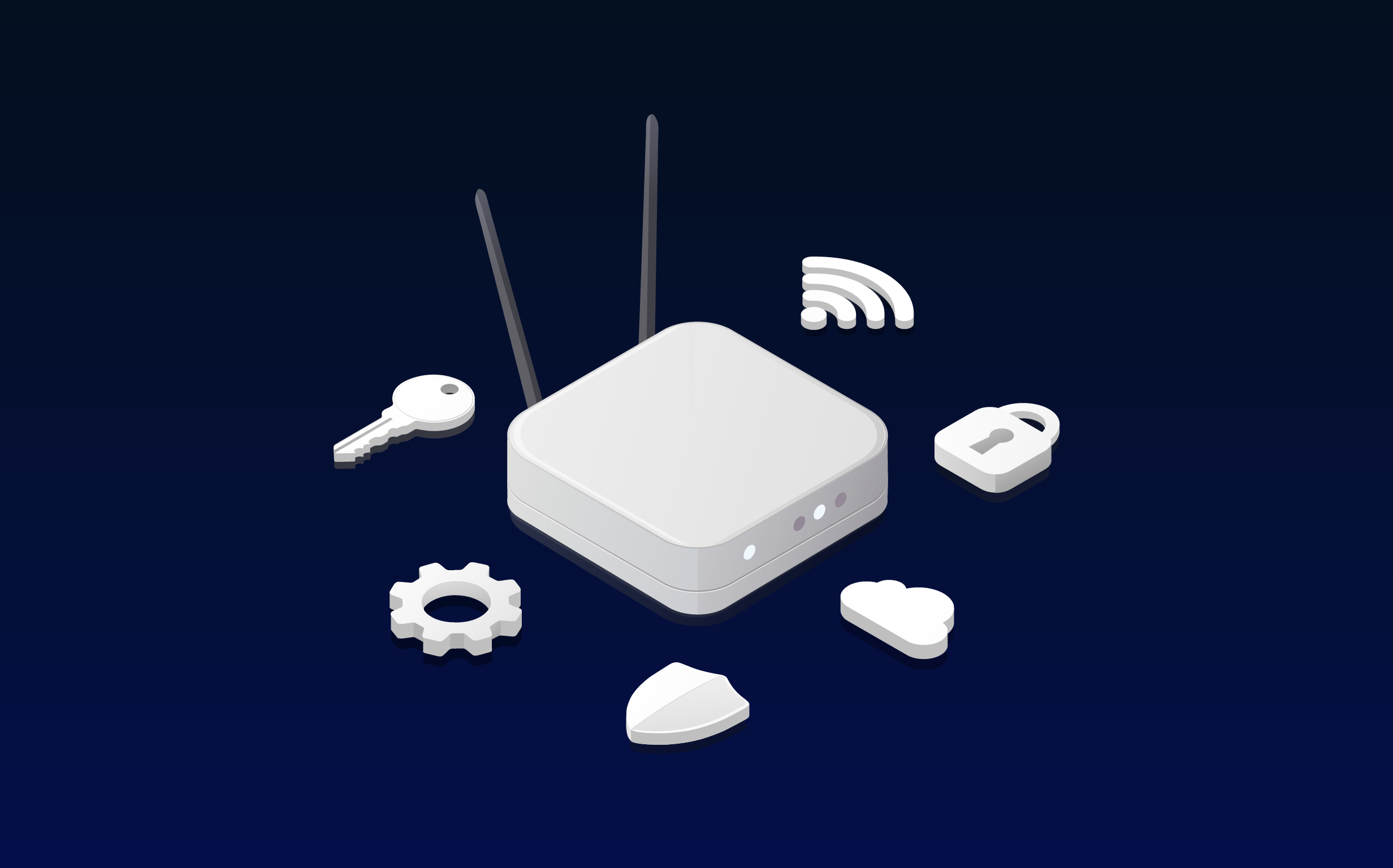In recent years, Software-Defined WAN Technology (SD-WAN) has changed the way networking professionals secure, manage, and optimize connectivity. As organizations continue to implement cloud applications, conventional backhaul traffic processes are now inefficient and can cause security concerns.
SD-WAN is a virtual architecture that enables organizations to use different combinations of transport services that can connect users to applications. Sending traffic from branch offices to data centers using SD-WAN provides consistent application performance, better security, and automates traffic based on application needs. It also delivers an exceptional user experience, increases productivity, and can reduce tech costs.
What is SD-WAN?
SD-WAN implements software to safely and effectively manage the services between cloud resources, data centers, and offices. It does this by decoupling the data plane and the control plane. The deployment process often includes vCPE (virtual customer premise equipment) and existing switches and routers. These run software that control most management functions, such as networking, policy, and security.
Until recently, a Wide Area Network (WAN) was the best method for connecting users to applications on data center servers. This would typically include Multiprotocol Label Switching (MPLS) circuits for secure connections. But today, MPLS is no longer adequate if you’re dealing with large amounts of data and working in the cloud. Backhauling from branch offices to corporate headquarters impairs performance. Gone are the days of connecting to corporate data centers to use business applications.
With SD-WAN, it’s now easier for you to deliver exceptional network experiences with less operational responsibility for IT staff.
What is the SD-WAN architecture?

Traditional WANs can limit growth and productivity due to their dependence on total hardwire network devices. SD-WAN depends on software to provide a virtual approach while implementing traditional technologies such as broadband connections.
The traditional architecture with conventional routers was not created for the cloud. Backhauling traffic was required from branch offices to data centers so detailed security inspection could occur. This method often hinders performance, causing a loss in productivity and a poor user experience.
SD-WAN, however, can fully support applications in on-site data centers. This includes SaaS services such as Microsoft 365 and Dropbox. The architecture can separate management and control functions, WAN transport services, and all applications. With centralized control, you can store and control all the data on the applications. The control plane can adapt traffic to fit application demands and provide a high-quality user experience.
How does SD-WAN work?
SD-WAN uses communication tunnels, network encryption, and firewall software to manage and safeguard computer networks across several locations. SD-WAN can distinguish and separate network hardware from central controls and streamline operations. A business that uses SD-WAN can create higher-performance WANS by using the internet instead of MPLS.
Traffic flows through a specific SD-WAN appliance, with each appliance centrally controlled and managed. This enables the consistent enforcement of policies. SD-WAN can determine each application traffic and has the ability to route each one to the correct destination. These machine learning-based capabilities enable the software to base destination routes on existing policies.
Because SD-WAN is built to work efficiently, these solutions generally offer greater bandwidth efficiency, increased application performance, and easy access to the cloud. Users enjoy all these benefits without sacrificing data privacy or security. This can also improve customer satisfaction and business productivity.
Furthermore, SD-WAN can identify different applications and provide specific security enforcement. This means that business needs are met, and the business is protected from threats. One of the reasons SD-WAN is so effective is because it can leverage new software technologies while implementing machine learning.
There are a few specific aspects of SD-WAN that enable it to work so well:
Ability to self-learn and adapt
SD-WAN normally guides traffic according to programmed templates and predefined rules. It has the ability to continuously self-monitor and learn. This is done by adapting to various changes in the network. These changes could include transport outages, network congestion, or brownouts. This adaptation occurs automatically and in real time. This limits the amount of manual technical intervention that is needed.
Ability to simultaneously use multiple forms of WAN transport
If a particular path is congested or fails, the system can implement solutions to redirect traffic to another link. SD-WAN can manage each transport service seamlessly and intelligently. The primary purpose of SASE is to provide the best experience possible for cloud applications. The ultimate goal is to be high quality for the user. The advanced capabilities provided by SD-WAN are necessary to enable optimum SASE and find solutions for these purposes in the event of technical problems.
How does SD-WAN and automation work?
SD-WAN already provides a certain amount of automation. To improve this process, each of the SD-WAN elements needs to communicate through APIs. Improving the communication will also enhance the changes the system can make to WAN edge devices. This affects the configuration of resources such as AWS, Google Cloud, and Microsoft Azure. This way, automation works through the entire system, not just in individual components.
Real-time path selection is an example of automation. As communication within the systems improves, the ability to increase the speed and precision of automated decisions will also improve. Insights based on instantaneous data collection will continue to increase efficiency and precision. You will want to continually integrate and update SD-WAN solutions with various machine learning forms to improve manual tasks’ automation. This will enable you to simplify and scale your system to meet the specific needs of each business operation.
Several SD-WAN benefits result from improved automation. These include less human error, faster operations, and improving quality of service. In the long run, the more automation you have, the more likely you will reduce overall operating costs. Automation means reducing the need to hire more engineers and other IT professionals. A self-learning network will increasingly automate many tasks currently done by humans.
What are the benefits of SD-WAN?
SD-WAN is able to offer solutions to many of the challenges you will likely experience when using traditional WAN. The many benefits of SD-WAN include:
Greater agility
While MPLS is good at routing traffic when there are only a few static locations, it’s certainly not as effective when doing business on the cloud. Policy-based routing is the key to SD-WAN’s agility. Traffic is sent through a network focusing on the needs of each basic application. You can use several different transport structures in the WAN. SD-WAN provides predictable agility while supporting cloud migration. This agility includes the ability to use a variety of connections interchangeably, including MPLS, LTE, and broadband.
Increased efficiency
Sending traffic from remote offices to primary data hubs can cause delays. SD-WAN can effectively tie in cloud services. As the use of cloud applications and containers that need edge access increases, so does the need to implement SD-WAN technology. Cloud resources are easily connected with the data hubs in a fast and cost-effective manner. This enables private data centers to grow while organizations can still efficiently expand their use of public cloud services. There is also a reduction in latency issues, which means greater application performance.
Improved security
SD-WAN allows security specification for individual customers that is scalable. Organizations can set up secure zones to guide traffic based on their business policies. A company can protect critical assets with specific partitions while also using firewalls as part of the security process. You can create partitioned areas, basing them on particular roles or identities. You can also monitor network connections, enable deep packet inspection, add data encryptions, and log all security events.
Reduced costs
Backhauling is not only more time-consuming, it’s also costly. MPLS connections between offices and data centers cost more than wireless WAN links or internet broadband. It may take weeks or longer to supply new MPLS links, and MPLS bandwidth is potentially expensive. The same process takes only days when using SD-WAN. In many ways, particularly when it comes to expense, SD-WAN is superior to MPLS. It can also save money by lowering maintenance and equipment costs.
Increased simplification
SD-WAN simplifies turning up new links to remote offices while managing how each link is used more effectively. There is sometimes the need to use several stand-alone appliances with MPLS. You’re able to centralize operations and more easily scale a growing network when using SD-WAN.
Better app performance
Supporting cloud usage and SaaS apps is a necessary part of the digital progress. Applications generally need a lot of bandwidth. SD-WAN provides adequate support with high priority for critical applications. The network hardware separates from the control pane using an overlay network. Network connections then determine the best paths for every application in real time.
Remote access
Cloud access is the primary reason many organizations choose SD-WAN. No matter where your branch or office is, you can easily access all available cloud applications. You can also direct traffic through the data center for critical business applications.
What are the drawbacks of SD-WAN?
SD-WAN has some disadvantages, but the correct tools can overcome many of these drawbacks. Some disadvantages include:
Providing security
Because of how network security is set up, a breach could occur in several remote locations throughout the organization if a hacker breaches security and gains access to the central data branch. This type of connectivity could affect an entire company.
Training staff
Adapting to SD-WAN is not always easy if you’re running or working for a smaller business. Your current staff may not have adequate training to understand and implement this particular technology. In some cases, you may find it counterproductive to hire new IT personnel or train existing staff to build and maintain SD-WAN systems.
Supporting WAN routers
Your SD-WAN system may not support WAN routers. An ethernet connection is likely to interfere with the WAN architecture. You’ll have to come up with a method to eliminate this potential problem. Time-division multiplexing is one option.
How do you select the best SD-WAN?
You’ll want to consider several factors when selecting any SD-WAN model:
- The SD-WAN you select should have the ability to collect real-time statistics.
- The model should connect with all endpoints from any software and application.
- Your selection must be able to encrypt all traffic over the network.
- You should choose a model that provides policy-driven solutions.
- You’ll want an SD-WAN with advanced security that meets your organization’s needs.
- You’ll want to select an SD-WAN that can efficiently utilize bandwidth.
- Your selection should have mobility features, including access control and automatic ideal route selection.
- Your selection should be able to connect with several stations with various internet data services.
What SD-WAN choices are available?
The following are a few of the best-rated SD-WAN solutions:
- Cisco Meraki SD-Wan – This model provides visibility and connects to any application.
- Oracle SD-WAN – Besides routing and firewall, Oracle provides cost-efficient internet connections and high bandwidth.
- CenturyLink SD-WAN – This will help you create a more agile and wide network. It also gives users data reports and analytics.
- Fortinet FortiGate SD-WAN – This solution offers next-generation firewall and advanced routing.
- Wanify SD-WAN – This model delivers VeloCloud SD-WAN through a partnership with VeloCloud. You’ll have end-to-end process management and Wanify’s customer support.
- Aruba Edge Connect – Ratings state that this software is one of the easier types to use. It focuses on reducing costs while simplifying the process.
- Masergy SD-WAN – Masergy has built-in Fortinet security. It also uses AI for its IT operations.
If your organization is using the cloud and subscribing to SaaS, connecting back to a central data center to access applications is no longer efficient or cost-effective. SD-WAN provides a software-centric process that will give your organization optimal access to cloud applications from all remote locations. Your team can create a network that relates to the company’s business policies and promotes the long-term goals of the organization.
Subscribe to our blog
Get articles like this delivered straight to your inbox








